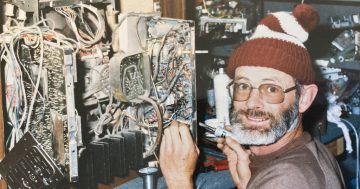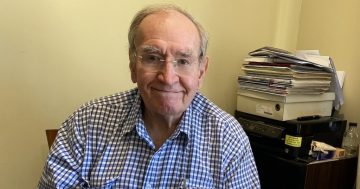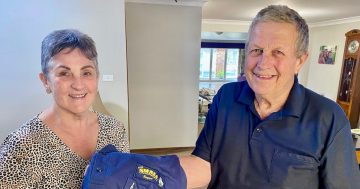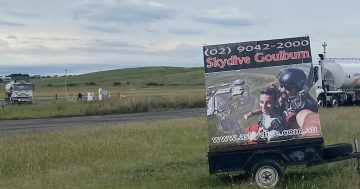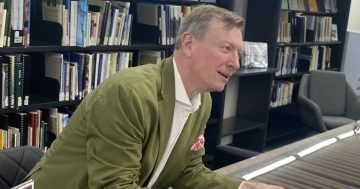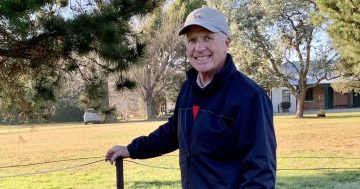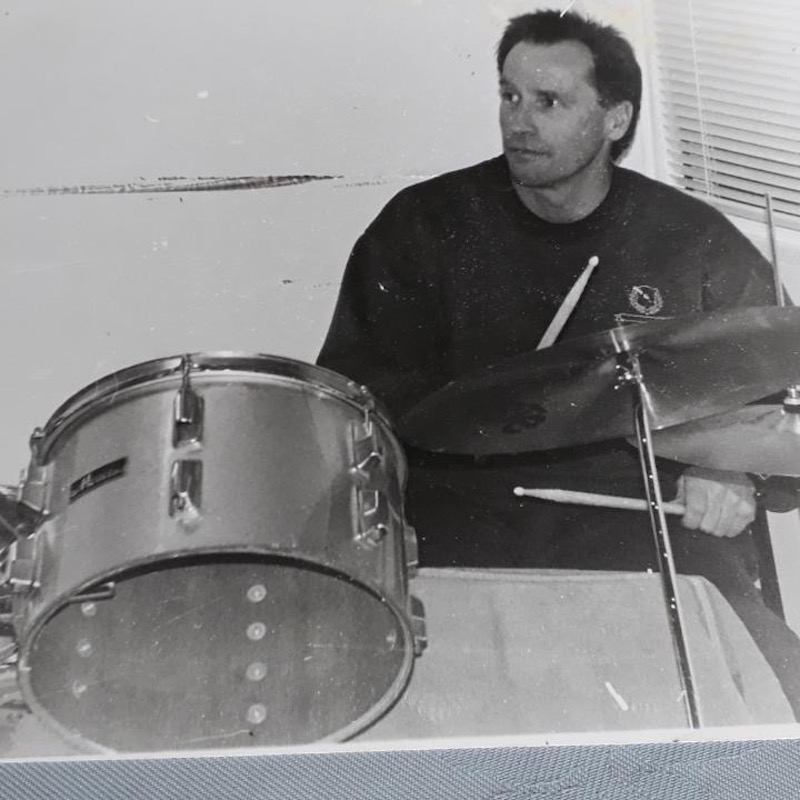
Ian Aldridge is the new president of the Goulburn Club, a music-centred volunteer organisation which has revived a historic building in the regional city. Photo: Supplied.
Fit, playing alongside his favourite music-loving friends and in the closing chapter of his engineering career, Ian Aldridge was enjoying life in Goulburn.
Then niggling discomfort in his back after exercising at the gym became more annoying. Later, while he stood in queues overseas on holidays, it became worse.
On his return home, he went to a doctor. Blood tests revealed multiple myeloma, a blood disease similar to leukemia. The August 2018 diagnosis was confronting, yet he barely had any symptoms.
Two weeks later, overwhelming pain surged across his back.
“I could barely move,” says Ian. “I was quite distraught. If I was sitting in a seat I could not lean forward to pick up a glass of water. I just couldn’t move. I thought, ‘What the hell? How am I going to end up?’”
Towards the end of 2018, Ian’s fight for survival began with mild chemotherapy, leading up to a stem cell transplant. Then a massive dose of chemotherapy cleaned up his blood before his stem cells were extracted. A month later, the stem cells were put back into his body.
His immune system reduced to nothing, he was quarantined in a room in Canberra Hospital with purified air-conditioning, rugged up against the freezing temperature.
“That was really trying, being locked away in that room,” says Ian.
While reading, doing crosswords and watching TV, he had time to reflect on a busy career.
Ian arrived in Goulburn on a chilly winter’s day in 1992 as the city was preparing for the Hume Highway bypass. That was a scramble for survival, too. Local businesses were fearful of losing an estimated $40 million, and civic leaders wanted to make the city more desirable.
“The council wanted to change a dreadful truck route into a more attractive, pedestrian-friendly place, and launched a five-year CBD enhancement project, worth about $1 million each year,” he says.
He would check over the work which was done at night.
By the mid-1990’s, he’d had a role as project manager for the Goulburn indoor heated pool. On the pool’s fundraising committee, he and others had called on then local member John Fahey.
Ian had carried in a three-dimensional model of the proposed complex, including tiny cars, tiny trees and tiny people. The volunteers couldn’t interest Fahey in any funding until they turned the discussion to sport.
“We struck up some rapport and towards the end of the meeting he was saying, ‘Well, look, I am Premier! I will just get some money,’ and he became far more supportive,” says Ian.
When they finished talking and stepped outside of Fahey’s office, it was raining. Ian rested the model on his car’s bonnet as he went to open the door, and the model slipped off the rainy surface.
“So John Fahey is at the door waving us off, and his last memory of me would be picking up these little trees and people out of the gutter,” he says.

Ian Aldridge (right) with, from left, his mother Leah, wife Jenny and children Rohan and Madeleine on a cold winter’s day in 1992.
Now Ian is picking himself up from a brush with death.
“There is no cure for myeloma,” he says. “Stem cell transplant is the best treatment they have these days. That happened in January 2019, and now I am on a maintenance regime. Things are looking OK.”
Ian’s hair began growing back in June, and a few weeks ago he retired from his 43-year career, which ended with him as project engineer in Goulburn Mulwaree Council’s planning department.
He’d been educated at university in Sydney where he lived in a share-house with mates, drove taxis, graduated, and was employed by the then Public Works Department before landing in Goulburn.
These days, his easygoing laugh has returned.
“Now I seem less concerned about things,” says Ian. “A lot of people are worried about COVID-19, but I don’t seem to be all that concerned about it. Perhaps I should be.”
Elected president of the volunteer Goulburn Club, he is excited it has won two grants for upcoming musical performances. He plays guitar and wants to repay the club for the enjoyment he has taken from it since 2002.
His main goal, as the licensed premises grapples with COVID-19 restrictions and social distancing, is that it survives, too.
Original Article published by John Thistleton on The RiotACT.







